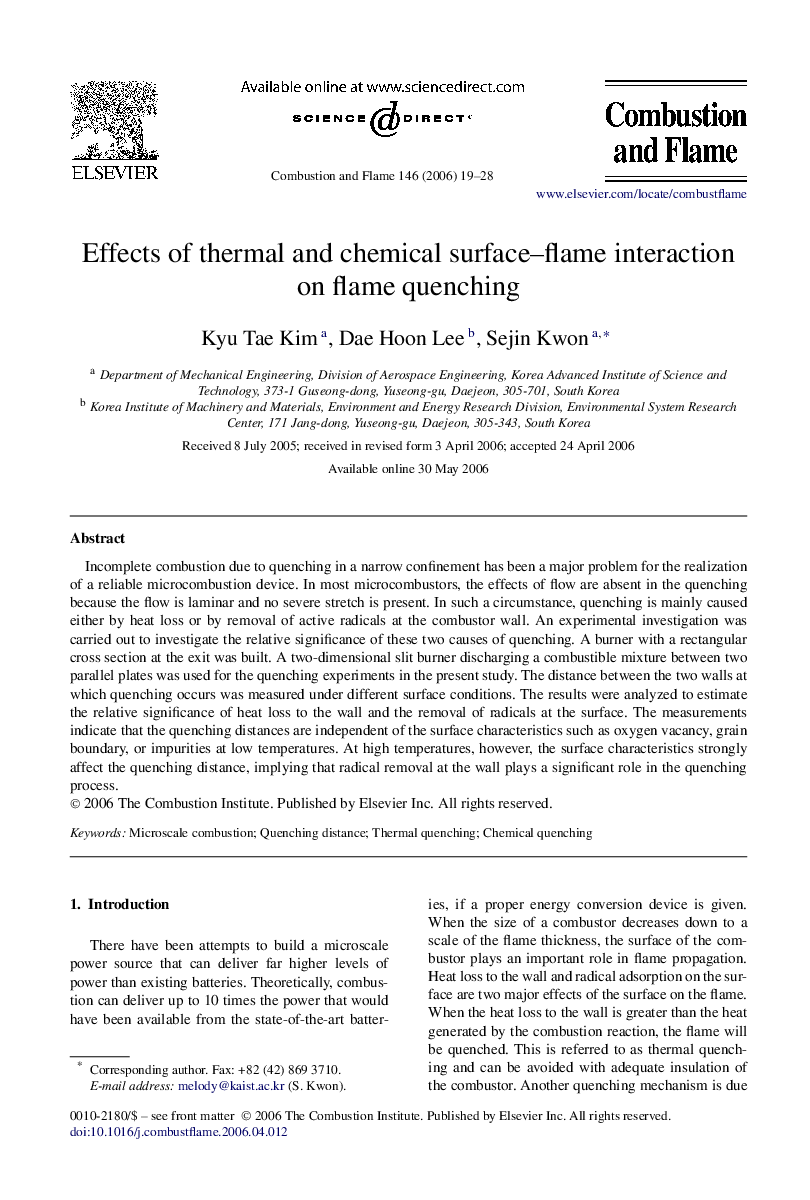| کد مقاله | کد نشریه | سال انتشار | مقاله انگلیسی | نسخه تمام متن |
|---|---|---|---|---|
| 169901 | 458053 | 2006 | 10 صفحه PDF | دانلود رایگان |

Incomplete combustion due to quenching in a narrow confinement has been a major problem for the realization of a reliable microcombustion device. In most microcombustors, the effects of flow are absent in the quenching because the flow is laminar and no severe stretch is present. In such a circumstance, quenching is mainly caused either by heat loss or by removal of active radicals at the combustor wall. An experimental investigation was carried out to investigate the relative significance of these two causes of quenching. A burner with a rectangular cross section at the exit was built. A two-dimensional slit burner discharging a combustible mixture between two parallel plates was used for the quenching experiments in the present study. The distance between the two walls at which quenching occurs was measured under different surface conditions. The results were analyzed to estimate the relative significance of heat loss to the wall and the removal of radicals at the surface. The measurements indicate that the quenching distances are independent of the surface characteristics such as oxygen vacancy, grain boundary, or impurities at low temperatures. At high temperatures, however, the surface characteristics strongly affect the quenching distance, implying that radical removal at the wall plays a significant role in the quenching process.
Journal: Combustion and Flame - Volume 146, Issues 1–2, July 2006, Pages 19–28